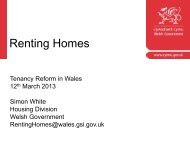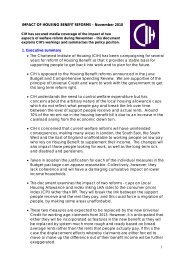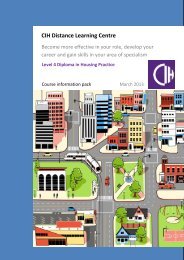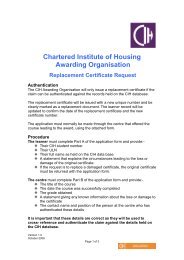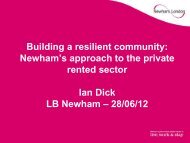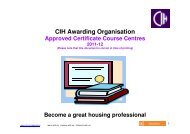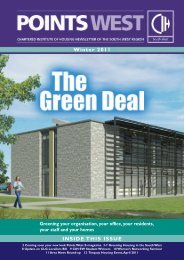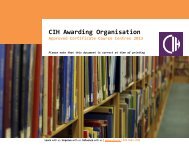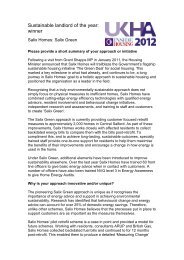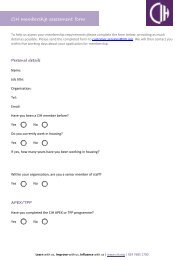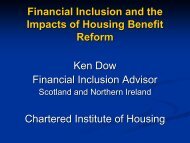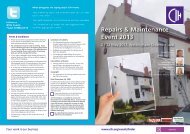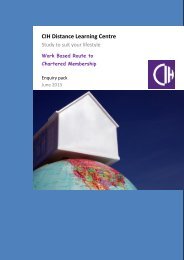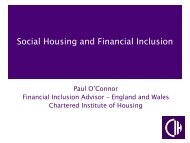View publication - Chartered Institute of Housing
View publication - Chartered Institute of Housing
View publication - Chartered Institute of Housing
You also want an ePaper? Increase the reach of your titles
YUMPU automatically turns print PDFs into web optimized ePapers that Google loves.
PART TWO: LEADING TOMORROW<br />
• Secondly, our communication needed to improve. We embraced customer friendly<br />
writing and trained staff to think more about our audience and improve the<br />
accessibility <strong>of</strong> written communication. This helped build better, more transparent<br />
relationships with our residents.<br />
• Finally, we delivered training and development opportunities aimed at developing the<br />
whole person. This focused on positive thinking and overcoming self-limiting beliefs.<br />
Confident, positive, staff, who take responsibility for their actions will always work<br />
better with customers. It could be argued, then, that our approach starts with our<br />
customers and works backwards.<br />
The work stream with residents was about building structures and trust. We created our<br />
co-regulatory resident governance structure in stages. A Resident Board Member<br />
Steering Group was established first to design and implement the new framework. We<br />
took every opportunity to work face-to-face with residents – and they certainly took the<br />
time to tell us what was wrong. Gradually people believed our values <strong>of</strong> openness,<br />
honesty and integrity. We established Local Area Panels (LAPs) for residents which<br />
covered our areas <strong>of</strong> operation in London and Surrey, Sussex and Kent. These fed into a<br />
Residents Council. Acutely aware <strong>of</strong> the role repairs played in the fortunes <strong>of</strong> customer<br />
satisfaction, we also set up Repairs and Maintenance Panels (RAMPS) to scrutinise our<br />
performance. Once the main structural elements <strong>of</strong> our resident governance were in<br />
place, we undertook a major review to test its effectiveness. Any weaknesses were<br />
identified and ironed out. And from now strong, structural foundations, we grew our<br />
resident involvement strategy.<br />
Our new resident involvement strategy gives people a menu <strong>of</strong> choices around how they<br />
would like to be involved. But the involvement needs to be meaningful. This includes:<br />
• Responsibility for identified budgets.<br />
• Scrutiny <strong>of</strong> performance.<br />
• Financial information and autonomy to shape local services.<br />
As we move forward, our residents will be at the heart <strong>of</strong> our new leaning thinking<br />
programme we’ve named WOW, or ‘Ways <strong>of</strong> Working’. Residents tell us what they<br />
value. This helps us to map processes to enhance those things whilst throwing the rest<br />
out. If it doesn’t matter to residents then ditch it.<br />
The parallel processes with staff and residents, have now come together. Under our<br />
‘One Team’ approach, we held joint sessions for staff, residents and Board members to<br />
100



